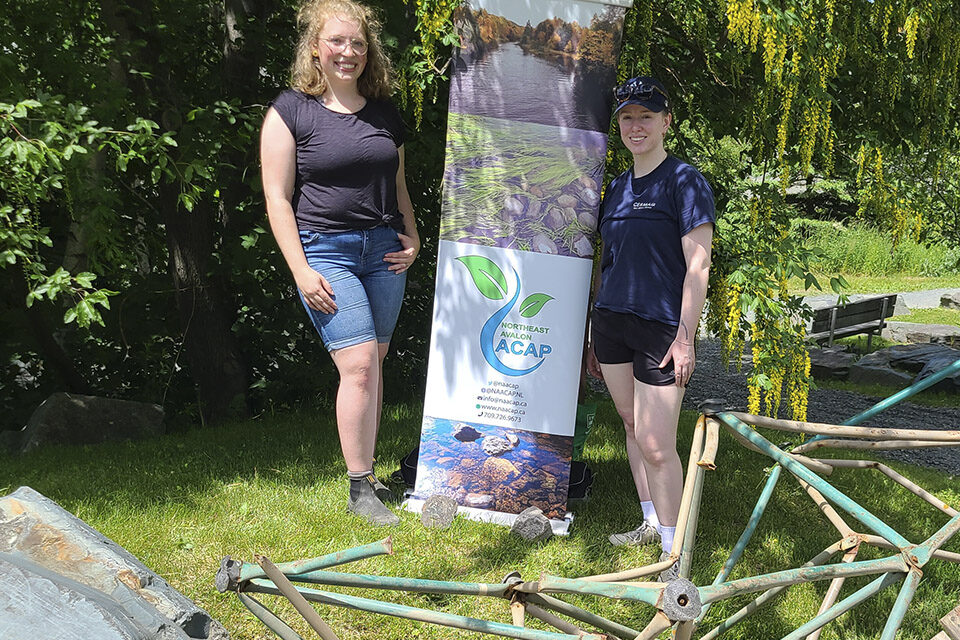Featured Projects
Northeast Avalon Atlantic Coastal Action Program / Newfoundland & Labrador / 2022
Assessing the habitat quality for Atlantic salmon in the Waterford River

Newfoundland’s Waterford River was historically home to significant numbers of Atlantic salmon, but after many years of nearby urban development and competition from introduced brown trout they have not been seen in the watershed for many years. And while this makes the river a tempting prospect to attempt repopulation efforts, the river has been impacted by many years of development and, more recently, the impacts of climate change.
“My thought on it was, instead of just jumping straight into throwing juveniles or eggs into the river and hoping for the best, to assess how the river has changed since climate change has taken effect to see whether it would even be a viable option to reintroduce salmon into the river,” said Jennifer Blundon, project coordinator with the Northeast Avalon Atlantic Coastal Action Program. “We started with the lower sections of it first, and then considered it a phased project over time to paint the full picture and see whether or not it’s an option to successfully reintroduce.”
The impacts of climate change on watersheds cannot be ignored – days before Blundon spoke with the ASCF for this project profile, Hurricane Earl arrived in Newfoundland, causing the Waterford and many other rivers to burst their banks, leading to significant flooding in nearby areas. This has led to concern about what may have been washed into the river as a result.
“But this is not an isolated event,” said Blundon. “It’s becoming more and more frequent in recent years. So contaminants and things like that are also a concern, as rivers have flooded their banks.”
The NAACAP identified 8 sites to perform their assessments, ranging from the harbour front all the way to Bowring Park – the park being chosen as an end point due to its large duck population and the potential for impacts on water quality from that point. The assessments include temperature, pH, specific conductivity, total dissolved solids and dissolved oxygen which will all be compared to optimal conditions for Atlantic salmon. They are also assessing physical barriers to Atlantic salmon movement.
“Based on what we found during cleanups associated with this project, we’ve come to realize that shopping carts are definitely prevalent in the water,” said Blundon. “And they’re kind of embedded into the ground at this point along the waterways. And I’m sure other things have gotten tangled up in amongst all that. We can’t do anything about that, but it will be part of our reporting.”
Aside from that insight into the potential for blockages in the river it is too early to draw any conclusions regarding the findings of the water quality assessments – the NAACAP started their assessments in July and will continue into October. The analysis of their findings is expected to be completed by the end of December. The NAACAP received just over $17,000 from the ASCF for the project and provided in-kind support of roughly $11,000.
